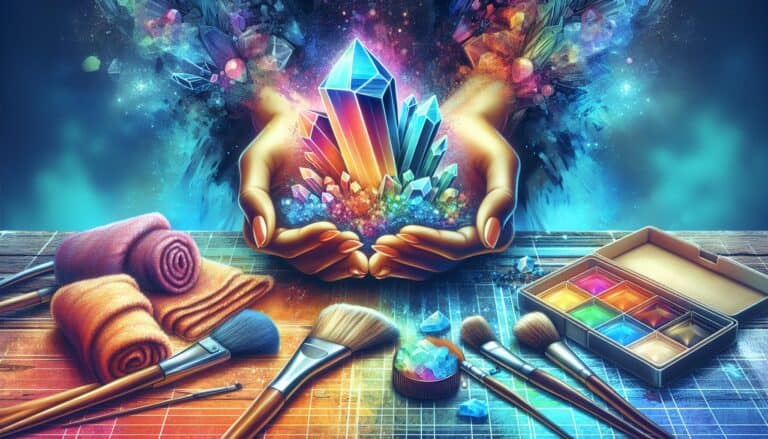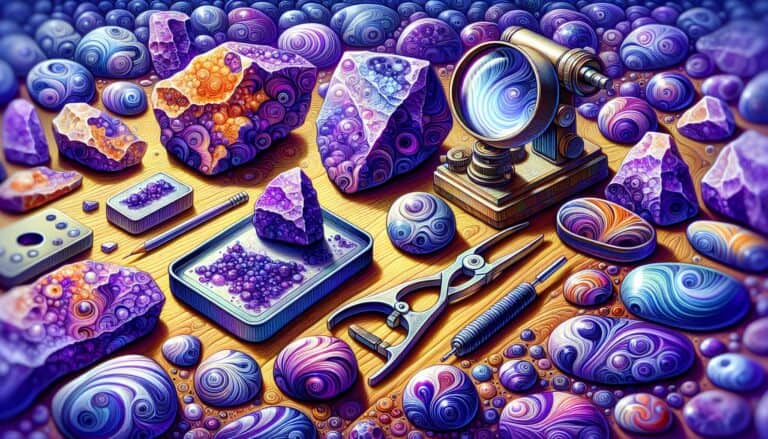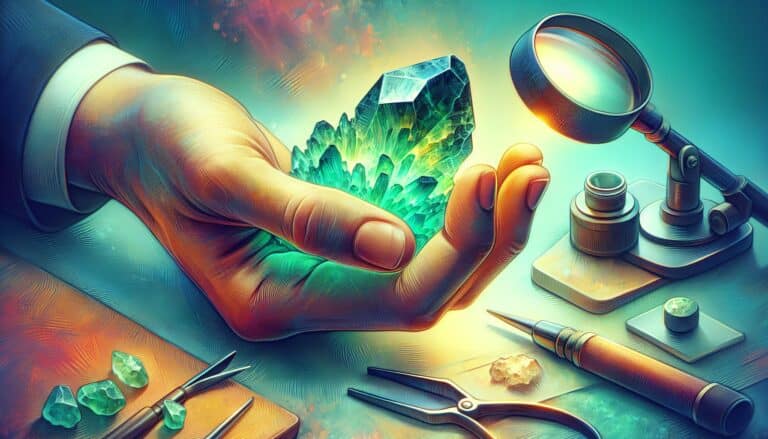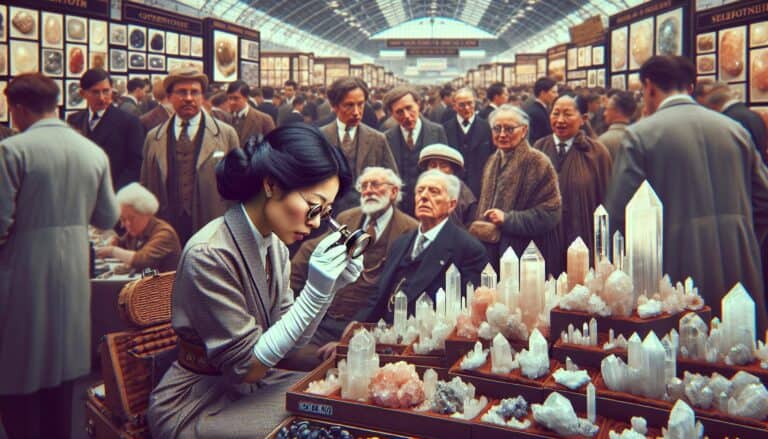Ever wondered why rhodochrosite catches the eye of gem enthusiasts?
It’s not just its alluring, rosy hue that captivates collectors; it’s also the value that comes with it. As I dive into the world of precious stones, I’ve learned that rhodochrosite’s worth isn’t just in its beauty, but also in its rarity and demand.
Determining the value of rhodochrosite can be quite the adventure. Factors like color intensity, pattern, size, and clarity all play crucial roles in its market price. I’ll guide you through what makes this gemstone a treasure and how these characteristics influence its worth.
Whether you’re a seasoned collector or just curious about the value of this pink gem, understanding rhodochrosite’s worth is essential.
Let’s explore the nuances that make this mineral so prized and why it might just be the perfect addition to your collection.
Rhodochrosite’s value is influenced by color intensity, pattern, size, and clarity. The most prized specimens feature vibrant reddish-pink hues, unique banding patterns, large size, and high clarity. Rarity, market demand, and source locality also play significant roles in determining its price.
Factors Affecting the Value of Rhodochrosite
When assessing the value of rhodochrosite, several factors take center stage. Color intensity is often the first thing that catches a buyer’s eye. Vibrant reddish-pink hues are typically more sought after and command higher prices than those with paler or muddied colors. The hue should be consistent throughout the stone, as this uniformity can amplify its allure and, by extension, its value.
Another crucial determinant is the pattern exhibited by the stone. Rhodochrosite can present striking banding patterns that range from zigzags to flowing concentric circles. Unique and eye-catching patterns aren’t just aesthetically appealing; they’re rare, making them extremely valuable to collectors.
The size of the gemstone also influences its worth. Larger pieces of high-quality rhodochrosite are less common, resulting in a significant increase in price. Clarity plays a role as well. Inclusions can detract from the stone’s beauty and desirability, reducing its market price. However, some inclusions, especially those that present an interesting aspect or tell a story about the gem’s formation, might add to its uniqueness and value.
I’ve found that market demand dramatically sways the price point. The number of collectors vying for rhodochrosite, along with the frequency at which it appears on the market, can cause its price to fluctuate. It’s crucial to keep an eye on current trends and the gem market to understand how demand is shaping the value.
Additionally, the source locality of the rhodochrosite has an impact on its worth. Stones from classic localities like the Sweet Home Mine in Colorado are often more coveted due to their known exceptional quality and history, thus enjoying a premium in the market.
Here’s a quick glance at how these value determinants stack up:
| Factor | Impact on Value |
|---|---|
| Color Intensity | High Impact |
| Pattern | Variable Impact |
| Size | High Impact |
| Clarity | Medium to High Impact |
| Demand | Fluctuating Impact |
| Source Locality | Medium to High Impact |
Understanding these variables is key for anyone looking to invest in rhodochrosite. The intricate dance between these factors dictates the gem’s price tag and ultimately its place within a collection.
Color Intensity and its Impact on Worth
When I delve into the specifics of rhodochrosite’s value, I can’t ignore color intensity, a defining factor for potential buyers. Rhodochrosite is coveted for its rich, vibrant hue that varies from a gentle rose to a hot, deep red. The most sought-after pieces are those that exhibit a deep, raspberry-red color which is not only stunning but also rare. It’s this scarcity that significantly boosts the gemstone’s worth.
A deeper shade of red in rhodochrosite signifies a higher concentration of manganese, which is the element responsible for its coloration. Gems with uniform color distribution fetch a higher price compared to those with color zoning or patchiness. It’s important to note that the presence of secondary hues could either enhance or detract from the overall value. For instance, rhodochrosite with orange or brown tones is typically less valuable than specimens with pure red hues.
The impact of color intensity on a rhodochrosite’s worth is particularly noticeable when comparing it to other factors. In the gem market, visually appealing specimens are more likely to attract attention, boosting demand and consequently, their price. Here’s a quick look at how color intensity may affect the value:
| Color Intensity | Market Value |
|---|---|
| Pale pink | Moderately Low |
| Vivid rose-red | High |
| Deep raspberry | Very High |
With that said, collectors and connoisseurs often seek out exceptional color qualities and are willing to pay a premium for stones that exhibit that perfect red hue. It’s undeniable that when evaluating rhodochrosite, or any gemstone for that matter, observing the nuances in color is crucial. The intensity, consistency, and aesthetic appeal of the color directly correlate with the gem’s desirability and hence, its worth.
The Role of Pattern in Determining Rhodochrosite’s Value
Just as color intensity plays a crucial role in the value of rhodochrosite, so does the stone’s pattern. Unique banding patterns are highly considered when valuing this captivating mineral. Rhodochrosite typically exhibits striking bands or zigzag patterns that are the result of geological processes occurring over thousands of years.
The presence of banded patterns, particularly those that are well-defined and contrast sharply with the color of the gem, can elevate the value significantly. Collectors and enthusiasts often seek out pieces that display intricate banding patterns, considering them to be more aesthetic and, therefore, more valuable.
One of the most appealing aspects of rhodochrosite’s patterning is the stalactitic form, which showcases circular bands resembling the inside of a tree trunk. These unique cross-sections present a mesmerizing natural art piece that’s not just a mineral specimen but also a geological record of time.
Rhodochrosite with banded patterns can be found in various degrees of clarity, from opaque to translucent. The translucence of a rhodochrosite specimen can affect how its patterns are perceived and appreciated. A clear, translucent stone can allow for greater depth and a 3D-like appearance of bands, which might make it more enticing to potential buyers.
When assessing the role of pattern in a rhodochrosite’s worth, collectors also pay attention to the symmetry and regularity of the patterns. Well-balanced, symmetric patterns are typically preferred and command higher prices in the market due to their rare occurrence.
What cannot be overstated is that each rhodochrosite stone tells a unique geological story through its patterns. The sheer diversity found in these natural designs ensures that every piece is one-of-a-kind – a factor that’s incredibly appealing to collectors and enthusiasts. As such, when I look at a piece of rhodochrosite, it’s not just the deep red color that captures my attention but the storytelling patterns resonating with earth’s history.
The Influence of Size on Rhodochrosite’s Market Price
When diving into the factors that sway the market price of rhodochrosite, size stands out as a heavyweight contender. As with many gemstones, larger specimens of rhodochrosite often fetch higher prices. But it’s not just about the sheer dimensions; it’s the interplay between size and quality that truly sets the stage for value.
Larger stones with rich color and captivating patterns are particularly rare, which naturally inflates their worth. These sizeable and high-quality pieces are sought after by collectors and high-end jewelry designers, creating a competitive market that drives prices upward. Here’s a snapshot of how size can impact rhodochrosite’s value:
| Size Range (Carats) | Relative Value Increase (%) |
|---|---|
| Under 1 | – |
| 1 to 5 | +50% |
| 5 to 10 | +100% |
| Over 10 | +200% |
It’s important to keep in mind, however, that once a rhodochrosite surpasses a certain size, additional factors such as clarity and pattern can tip the scales even more dramatically. Specimens that are not only large but also exhibit outstanding patterns and stellar translucence will command premium prices.
For jewelry purposes, rhodochrosite stones generally fall into a more modest size range. Jewelers often seek stones that are optimally sized for setting in rings, necklaces, and earrings. These tend to measure anywhere between 1 to 5 carats. Stones of this size that also possess exceptional color and pattern quality are deemed perfect for crafting exquisite pieces, and thus hold considerable value.
In my experience, the size of rhodochrosite can significantly influence its market price, but it’s not the sole determining factor. Buyers and collectors must balance their desire for larger pieces with the demand for overall quality to make a sound investment. The allure of a large, high-quality rhodochrosite specimen is undeniable but acquiring one is a nuanced dance between size and perfection.
Clarity: How it Impacts the Worth of Rhodochrosite
Like with many gemstones, clarity is a critical factor that significantly affects the value of rhodochrosite. When I talk about clarity in gemstones, I’m referring to the absence of inclusions or imperfections. Clear, blemish-free rhodochrosite is quite rare, and as such, it’s highly prized among collectors and jewelers.
For rhodochrosite, eye-clean specimens, those without visible inclusions to the naked eye, top the scale of clarity grades. These pieces command a premium price in the market. On the other hand, stones with noticeable inclusions are less valued, but can still be quite appealing if the inclusions contribute to a unique pattern or character within the stone. It’s important to remember that the clarity of rhodochrosite plays a considerable role in its aesthetic appeal, which in turn, impacts its monetary worth.
- Inclusions: Natural minerals or fractures within the stone
- Blemishes: Surface imperfections that occur post-mining
- Cut: A good cut can enhance perceived clarity by masking some inclusions
Not all inclusions are detrimental to rhodochrosite’s value. In some cases, they can create what’s known as “landscape patterns,” which are intricate designs that mirror scenes of nature. These patterns can add a level of depth and interest to the stone, making it a unique piece despite not being flawless.
In the marketplace, clarity grades for rhodochrosite aren’t standardized like they are for diamonds. However, the relative clarity of each piece plays a substantial role in pricing. Jewelers and savvy buyers often use a loupe, a magnifying tool, to inspect the clarity of a piece. Even subtle differences in clarity, observed under magnification, can lead to significant variations in pricing.
Investing in high-clarity rhodochrosite is not just about aesthetic preference; it’s often about ensuring lasting value. While some collectors prefer the uniqueness provided by visible inclusions, the general trend is that cleaner stones have a greater likelihood of appreciating over time.
Why Rhodochrosite is a Prized Gemstone
Rhodochrosite isn’t just another gemstone; it’s a treasure that’s been captivating hearts and minds for ages. As I delve into what makes this stone so special, let’s start with color – the most eye-catching feature of rhodochrosite. This gemstone is renowned for its rich, rosy red to pink hues, often interlaced with creamy white bands. The patterns and shades can vary significantly from one stone to the next, which guarantees almost every piece is one-of-a-kind.
Historical significance also has a part to play. Rhodochrosite has a storied past, with records showing it was revered by ancient civilizations. The Incas believed it to be the blood of their former kings turned to stone, which adds an element of mystique and luxury to this already gorgeous mineral.
The emotional and spiritual attributes attributed to rhodochrosite are another cornerstone of its value. Many people believe that wearing or possessing rhodochrosite can promote emotional healing and foster a sense of self-love and balance. It’s not just a piece of jewelry; it’s a said source of comfort and well-being.
Beyond its aesthetic and sentimental appeal, rhodochrosite is valued for its rarity. High-quality, flawless specimens are hard to come by, especially in larger sizes. The scarcity of these top-tier pieces drives up demand, cementing rhodochrosite’s position as a desired collectible gem.
In the realm of jewelry, rhodochrosite stands out for its ability to complement and enhance a variety of designs. From modern, minimalist pieces that let the stone’s natural beauty shine to intricate, vintage settings that draw out its antique allure, rhodochrosite is versatile and vibrant. Jewelers and designers prize this adaptability, which in turn translates to a higher market value.
Lastly, the durability of rhodochrosite is something to consider. With a Mohs hardness rating between 3.5 and 4, it may not be as hard as diamonds, but it’s still suitable for jewelry that’s worn with care. Properly maintained rhodochrosite jewelry can last for generations, imbuing the stone with an aura of heirloom quality that’s both personal and precious.
Conclusion: Buying & Selling Rhodochrosite
It’s clear that rhodochrosite’s worth is as multifaceted as the stone itself.
With its stunning hues and significant historical and spiritual resonance it’s no wonder collectors and jewelry enthusiasts seek it out. Its rarity and the craftsmanship it demands further elevate its status and value in the market.
Whether you’re an avid collector or simply appreciate the beauty of gemstones rhodochrosite is a treasure that’s both a joy to behold and an investment to consider.
Remember as with any gemstone the value can vary greatly so it’s always wise to do your research and consult with a trusted expert before making a purchase.


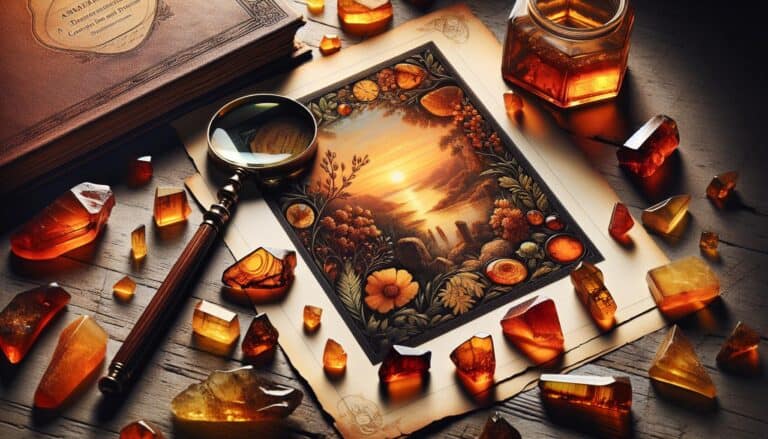
![Virginia Rockhounding Sites in [year]: Guide & Finds](https://observationhobbies.com/wp-content/uploads/2024/01/GLmeOzdUxOYuYKnhLJv6g-768x439.jpg)
